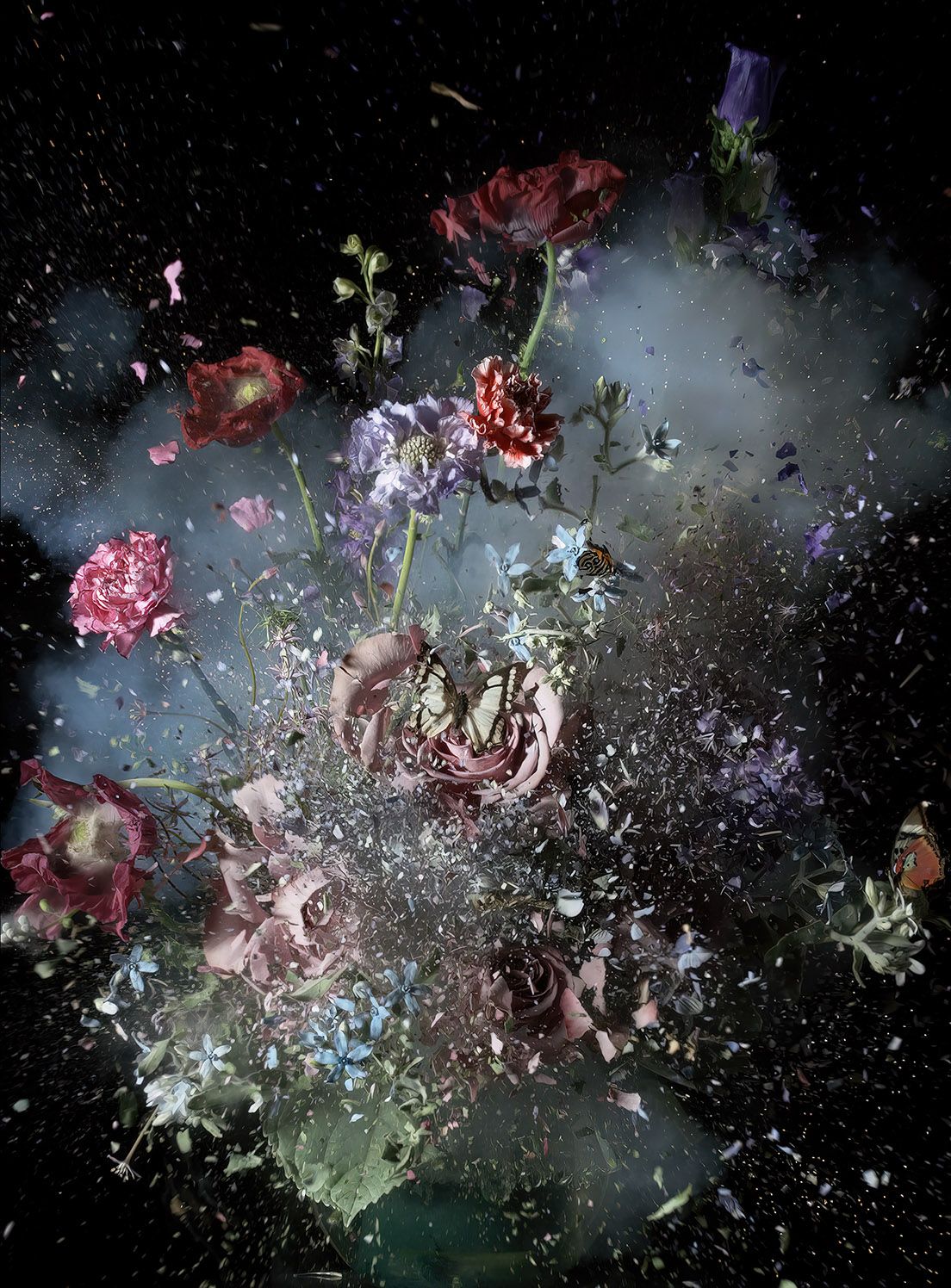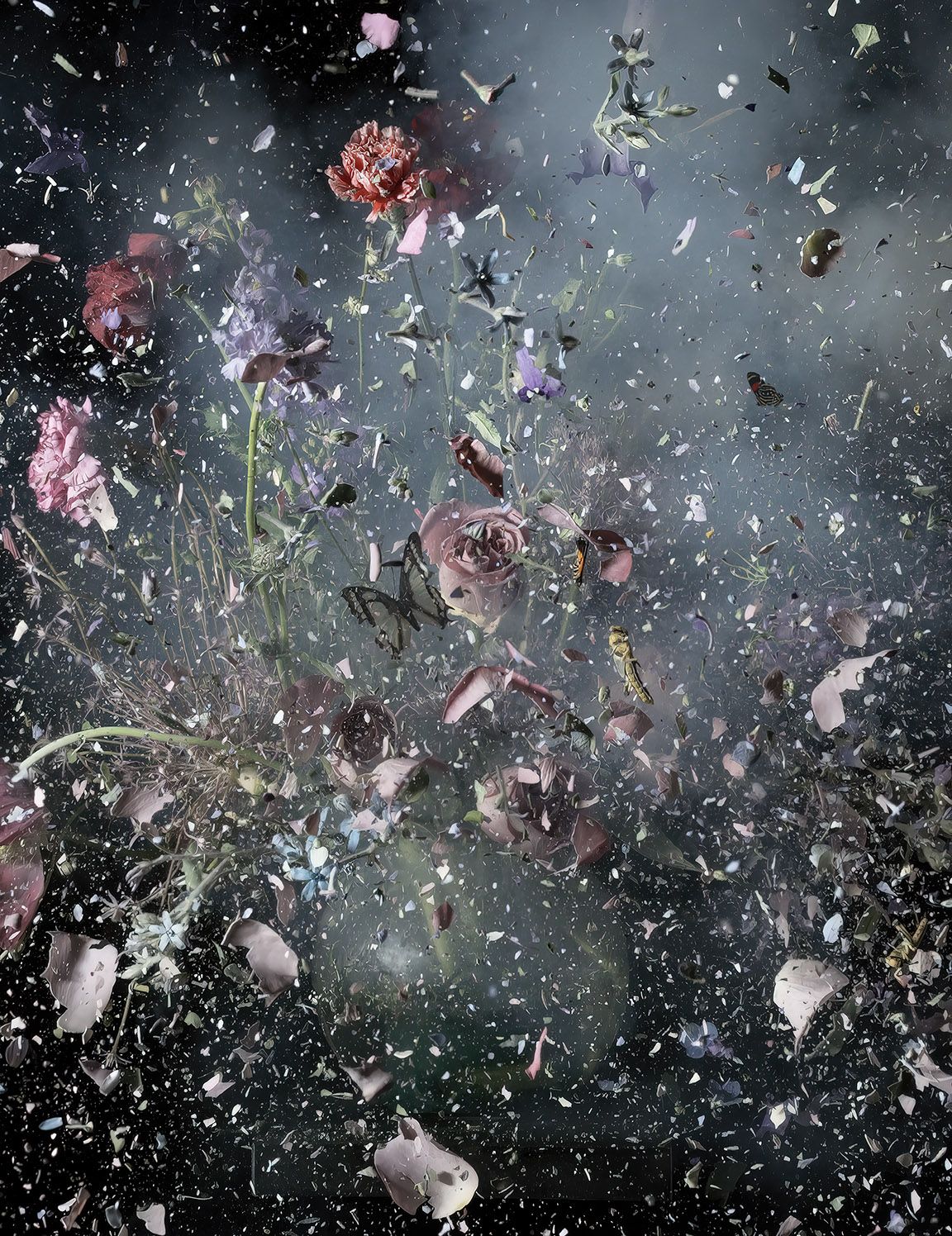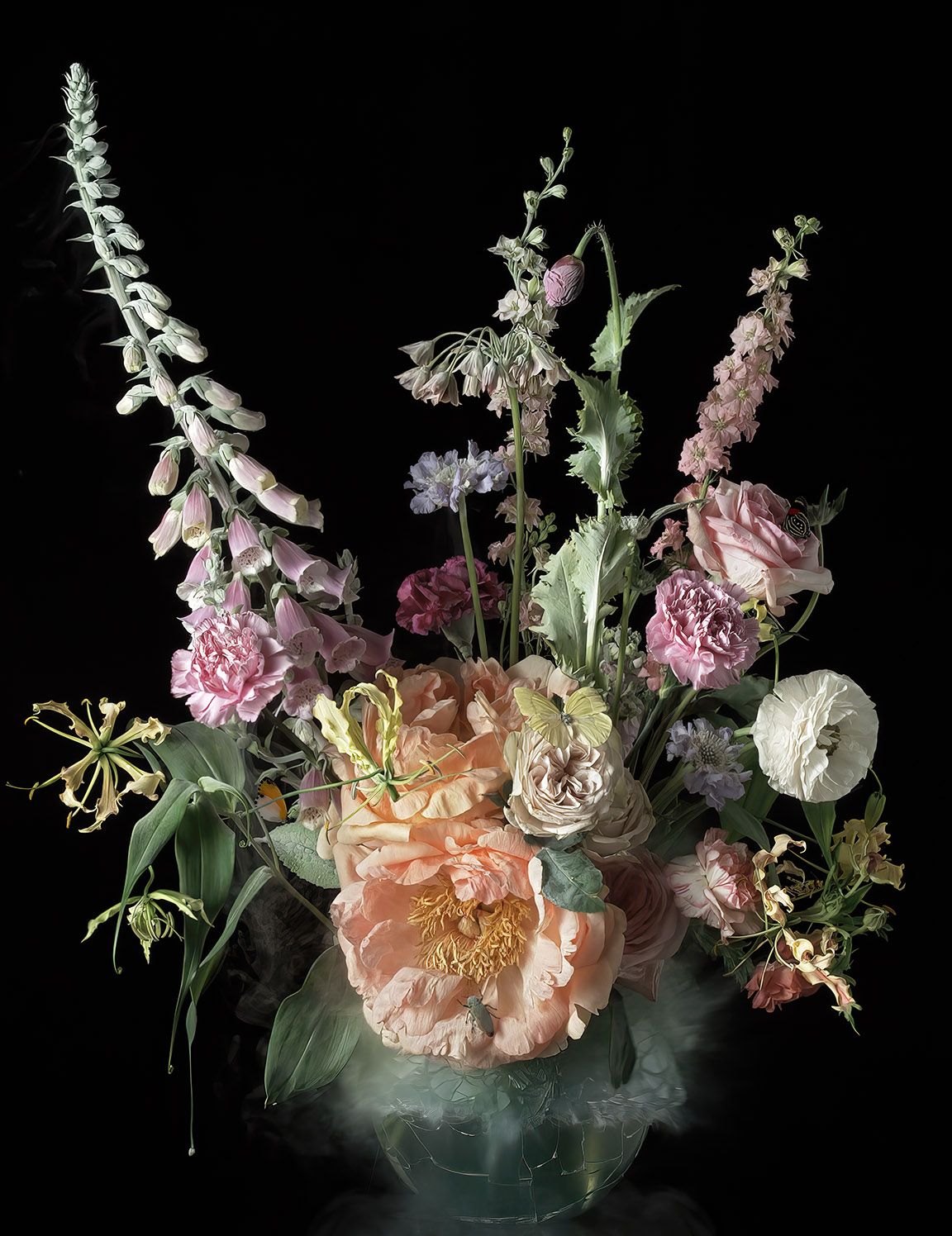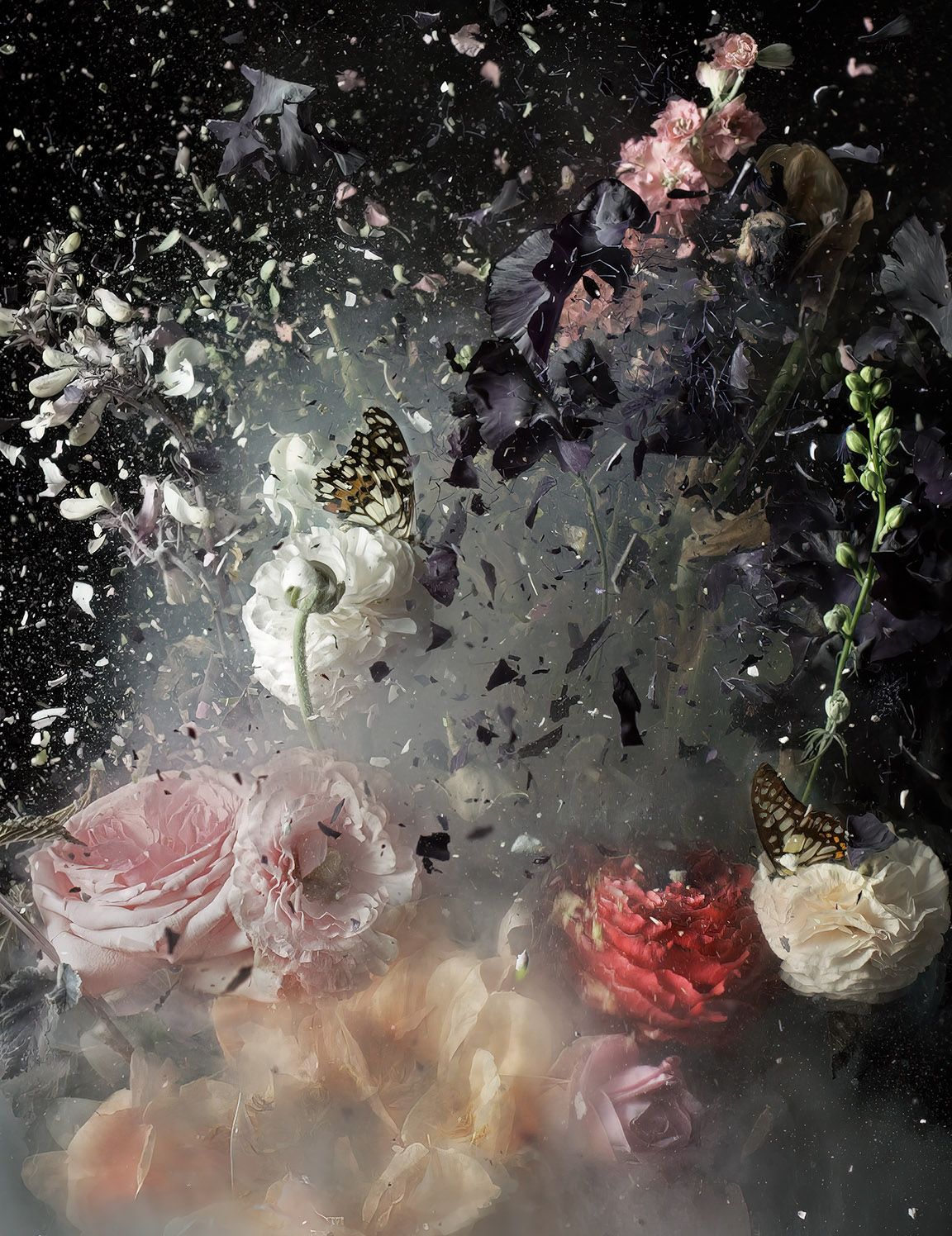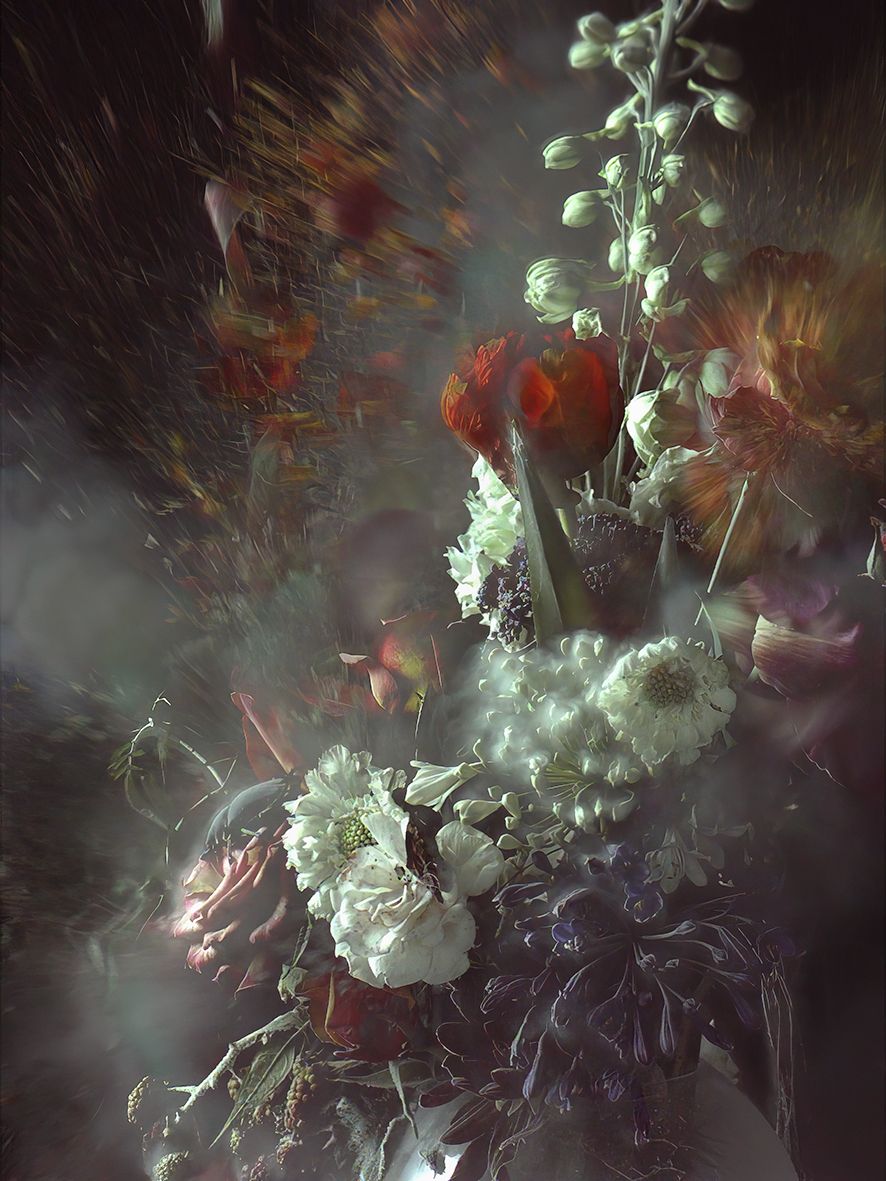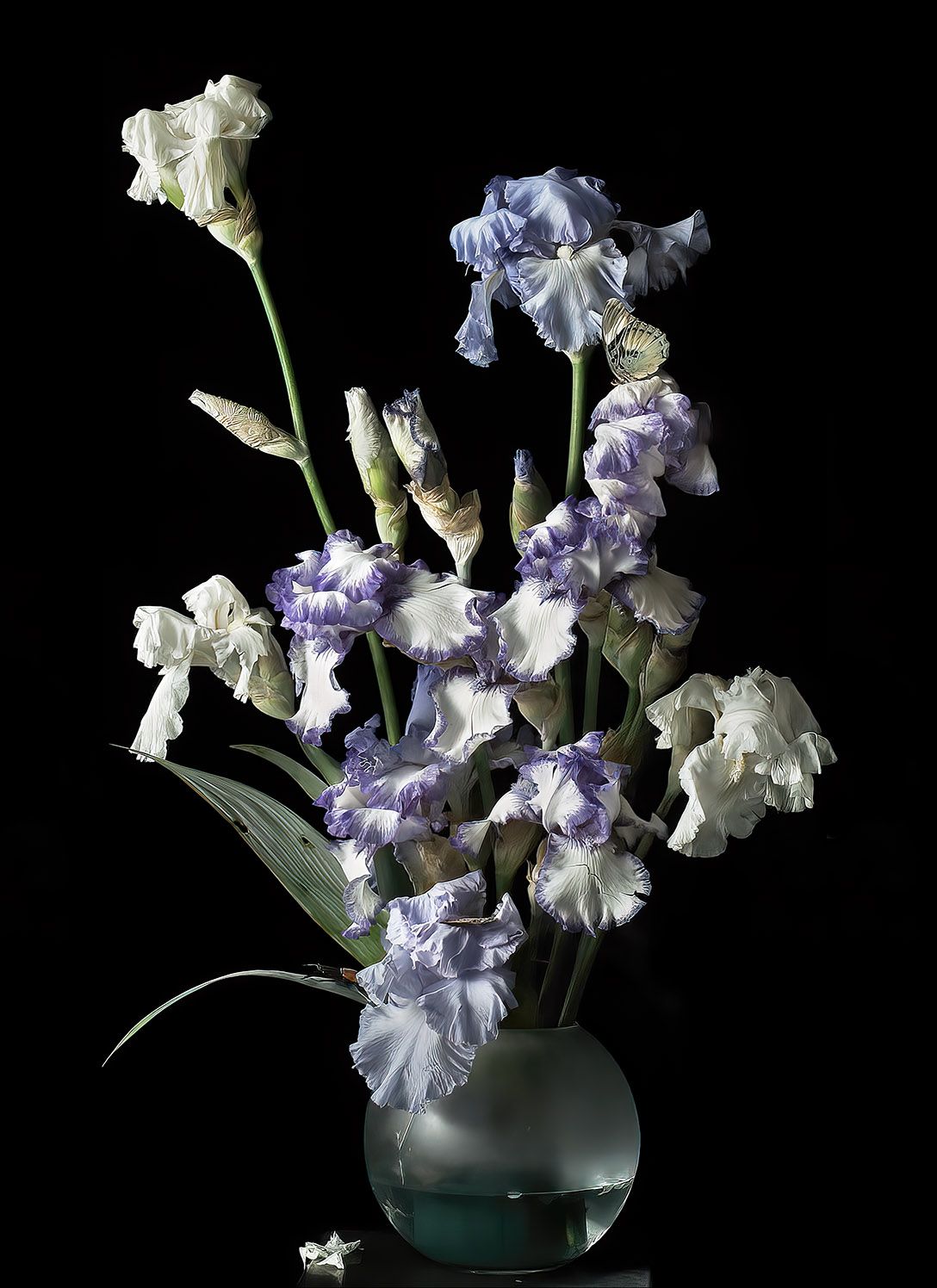Ori Gersht
Fields and Visions
Talley Dunn Gallery
January 14 – April 22, 2023
Talley Dunn Gallery is proud to announce a major exhibition of photographs and video by London-based, Israeli artist Ori Gersht. This comprehensive exhibition explores a selection of works from three series Floating Time (2022), Fields & Visions (2022), and Floating World (2106) along with a new video installation WaveForm (2022). For the first time, Gersht’s most recent work based upon the still life form is paired with the artist’s landscapes from his Floating World series. The exhibition investigates Gersht’s ongoing interest between the blurred realities of our worlds as he explores the relationships between history, memory, and landscape.
In Fields and Visions, Gersht returns to the botanical themes that have occupied him for so much of the last decade. The inspiration for this new work comes from the Swiss naturalist Maria Sibylla Merian, who travelled to Suriname (Dutch Guiana) in the 17th century and was the first artist to study and record native tropical plants and insects from that region, and the paintings of the American artist Martin Johnson Heade, who travelled to Amazonia in the 19th century in search of hummingbirds and exotic orchids.
Despite its convincing realism, their paintings and drawings reveal a fusion of fact and fiction, to create a unique and mysterious world that ignites our imagination. Inspired by the pioneering efforts of these early explorers, Gersht’s new photographic works re-examine the relationship between artistic representation and the deceptive photographic claim of a single objective truth. However, instead of travelling to remote places, Gersht has reproduced these exotic locations in his studio, bringing them to life with sudden violent disturbances to reinforce the authentic moment recorded by the camera. Then, with the aid of artificial intelligence software, he enlarges the low-resolution photographs, inviting the computer to fill in the missing information and reshape the images. In a sense, the software is required to use its acquired knowledge to reimagine the events and to present a new form of realism, fused naturally together.
The combination of the faithful trace of the optical lens in harmony with the computerized interpretation of the artificial intelligence registers a shift in our concept of reality, as these photographs are no longer a faithful depiction of the physical subject matter. The use of the artificial intelligence transforms the nature of photographic representation and this new part optical, part digital reality presents a shift in the discourse of authentic photographic vision, as the artificial intelligence redefines our perception of realism and in so doing, detaches the photographs from a particular time or place.
In Floating Worlds, Gersht visited Japan and photographed the Zen gardens located in and around Kyoto in 2015. Created to reflect the essence of nature, not its actual appearance, and as aids to meditation, these gardens are self-contained worlds within the wider world. They are both real and metaphysical places, where time stands still. For Gersht, they are symbolic of a physical and spiritual displacement that resonates with his personal history. They are places that hover between a utopian ideal and everyday reality.
Ori Gersht (b. 1967, Tel-Aviv) earned his BFA in Photography, Film & Video from the University of Westminster, London in 1992 and completed his Master of Photography at the Royal College of Art, London in 1995. Gersht’s work explores the connection between history, memory, and landscape. His work tends to present exquisite images underscored by darker associations of conflict. A recent trilogy of films in which traditional still-lifes explode in slow motion has received particular renown. Much of his work connects with art historical genres such as the still life and the landscape, and the particular modes of looking that these genres imply.
Gersht has been honored with solo exhibitions at the Hirshhorn Museum and Sculpture Garden, Washington, D.C. (2009); the Tel Aviv Museum (2012 and 2015); the Museum of Fine Arts, Boston (2012); the Center for Contemporary Art, Tel Aviv (2013); the Columbus Museum of Art, Columbus, Ohio (2014); and the Museum Kurhaus Kleve, Kleve, Germany (2015). His work is held by major collections including the Hirshhorn Museum and Sculpture Garden; the Museum of Fine Arts, Boston; the Museum of Modern Art, San Francisco; the Guggenheim Museum, New York; the Los Angeles County Museum of Art; The Getty Museum, Los Angeles; the Knoxville Museum of Art, Tennessee; Tate, London; the Victoria & Albert Museum; the UK Government Art Collection; the Tel Aviv Museum of Contemporary Art, Tel Aviv; and the Israel Museum, Jerusalem. Gersht lives and works in London, where he has been based for the past twenty years.

